The Sony Ericsson Xperia Play: Where Do You Want To Take Your Gaming Today?
by Brian Dipert on August 8, 2011 1:26 PM EST- Posted in
- Smartphones
- Sony
- Android
- Xperia Play
- Mobile
After deciding whether or not I'll be able to comfortably tote a cellular handset around in my blue jeans, my next evaluation step is to test its reception capabilities...because, after all, it's first and foremost a phone. Up front, I should note that I was reliably able to notably degrade the Xperia Play's received signal strength by holding it in either hand with my fingers pressed against the bottom half of one side and my palm aligned in the same location on the other side, in a natural hand-holding position:
In my upstairs bedroom, for example, the Xperia Play read -81 dBm when I wasn't touching it, but -91 dBm or worse when I held it as shown above. Stronger-reception environments may not experience the same degree of degradation (or, for that matter, dropped-call outcome) and, as is already well documented at this point, my iPhone 4 has its own 'Antennagate' issues. The previously mentioned gel case neatly addresses the iPhone 4's design shortcomings, and I suspect that the same would be the case (pun intended) for the Xperia Play.
All of the measurements that follow were taken, therefore, with the mobile phones not in my hand. I'm based in Truckee, CA, a small town in the northwest corner of Lake Tahoe that's blessed with an atypically robust telecommunications infrastructure courtesy of the large number of Silicon Valley residents who own vacation homes in the area. The Xperia Play I'm reviewing is a Verizon model, and Verizon happens to have the most robust coverage here of any of the four carriers. AT&T coverage is somewhat weaker, and I've therefore supplemented it with a Wi-Ex zBoost YX510-PCS-CEL cellular booster.
The YX510-PCS-CEL is a dual-band model that also comprehends Verizon's voice and data frequencies, so I've provided internal measurements both with it on and off. And for comparison sake, I've also listed the received signal strength measured by my Verizon-tailored iPhone 4, which I've jailbroken and from which I've therefore obtain dBm measurements courtesy of a SBSettings switch (although labeled as being exclusively for 'GSM' use, it works equally well for CDMA):
| Comparative Reception | ||||||
| Xperia Play | iPhone 4 | |||||
| Interior: upstairs bedroom (booster on) | -81 dBm | -78 dBm | ||||
| Interior: upstairs bedroom (booster off) | -81 dBm | -78 dBm | ||||
| Interior: downstairs living room (booster on) | -75 dBm | -74 dBm | ||||
| Interior: downstairs living room (booster off) | -75 dBm | -74 dBm | ||||
| Exterior: front deck | -59* dBm | -63 dBm | ||||
A few comments; first off, the YX510-PCS-CEL (whose retransmit antenna is also located in the downstairs living room) clearly doesn't seem to be having any positive Verizon reception effect, at least in the test locations I chose! Premium cellular boosters are intentionally designed to disable their amplification effects whenever the ambient signal is already sufficiently high, so perhaps this explains what I'm seeing (or more accurately, not seeing). And when measuring reception outdoors, I initially placed the Xperia Play to the right of and a couple of inches away from the iPhone 4 on the deck railing, wherein I received a -56 dBm result on the Sony Ericsson handset.
Since this result was notably divergent from what I'd gotten inside, I decided to swap the locations of the two handsets...wherein the Xperia Play reported -62 dBm of signal strength! Therefore, I averaged the two results for the asterisk'd -59 dBm number you'll find in the above table. This situation exemplifies the Achilles Heel of any testing of this nature, since results are dependent not only on handset location but also the presence or absence of any ambient degraders (close-proximity spectrum broadcasters, weather effects, intermediary walls and other attenuators, etc). In contrast, by the way, the iPhone 4 delivered consistent -63 dBm data in both locations.
With respect to phone functions, the Xperia Play was passable albeit not spectacular. Volume from the conventional speaker and speakerphone was sufficient for all but the highest ambient noise environments. Folks on the other end of the connection almost always claimed that they could hear me clearly, although I would have preferred that Sony Ericsson include a multi-microphone array for ambient noise suppression purposes, either done in software (aka Motorola Droid) or silicon (Nexus One and iPhone 4, via an Audience audio processor).
And regarding data transfer speeds, I returned to the front deck and captured a few screenshots of the Xperia Play running Ookla's Speedtest.net application:
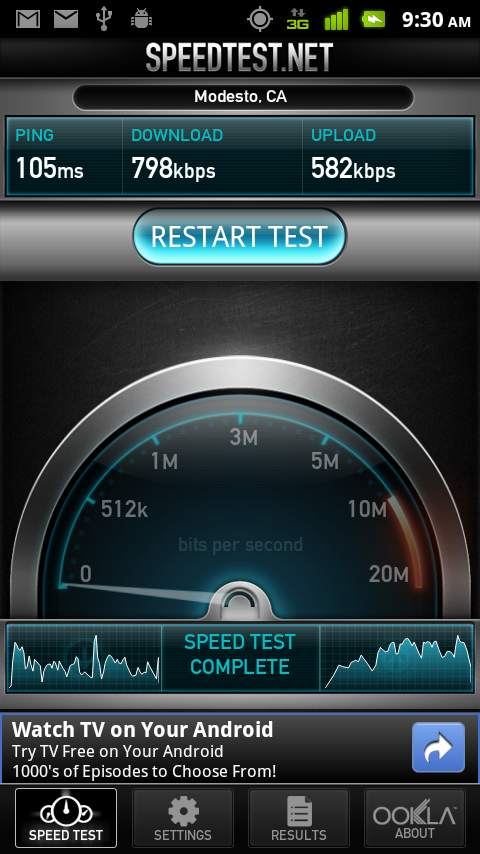
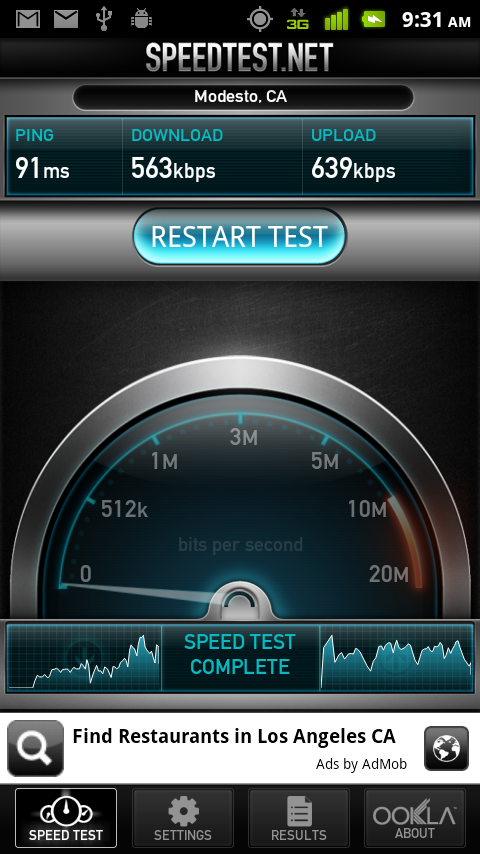
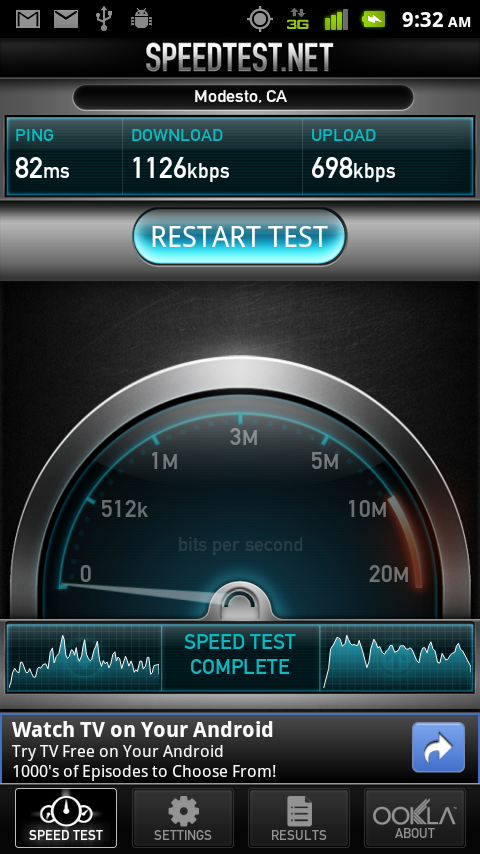
The Xperia Play advertises itself as being compatible not only with the older EV-DO Rev. 0 standard but also the newer, faster Rev. A approach. Based on the data above coupled with my prior experiences with CDMA cellular data-cognizant devices, I'm inclined to believe Sony Ericsson. The randomness of the results is somewhat intriguing; I presume it reflects a time-varying network load on whatever cell tower I happened to be connected to at the time. But considering that I saw peak download speeds of over 1.5 Mbps, for example, I'm confident in the Xperia Play's EV-DO Rev. A capabilities. For comparison's sake, here are some sequential screenshots of Speedtest.net running on my Verizon iPhone 4:


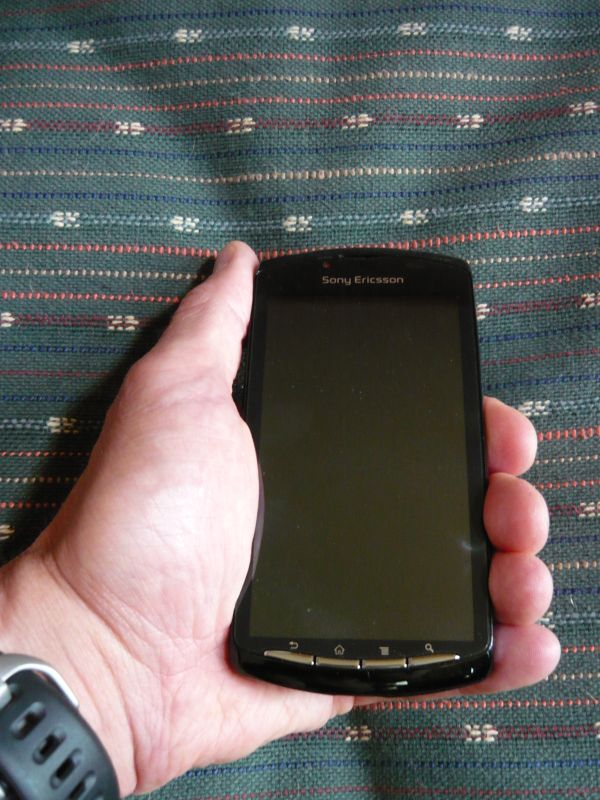
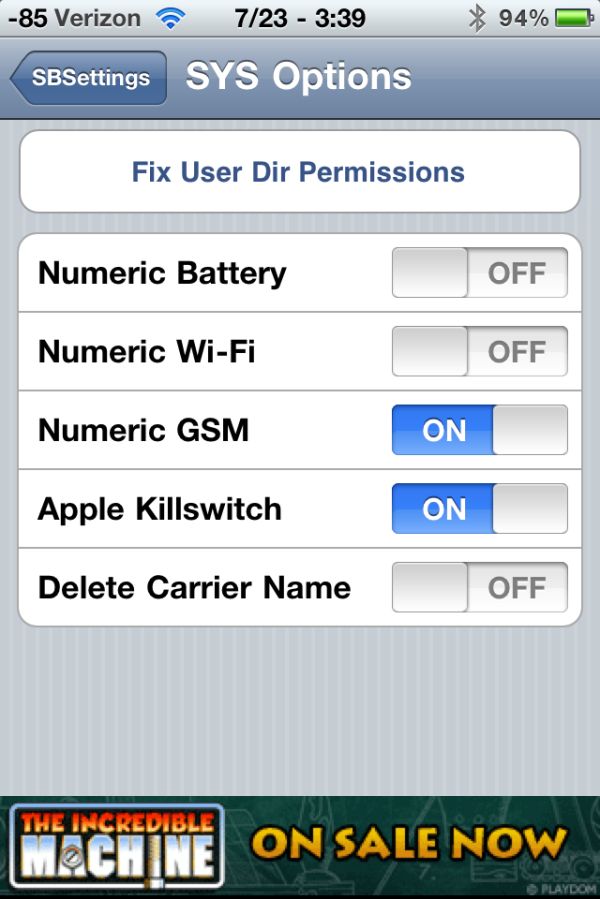
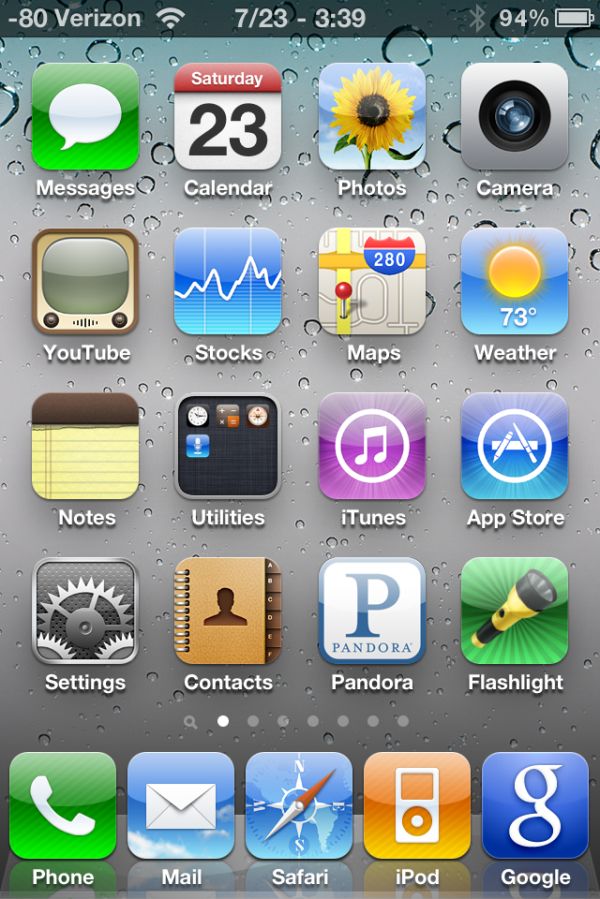
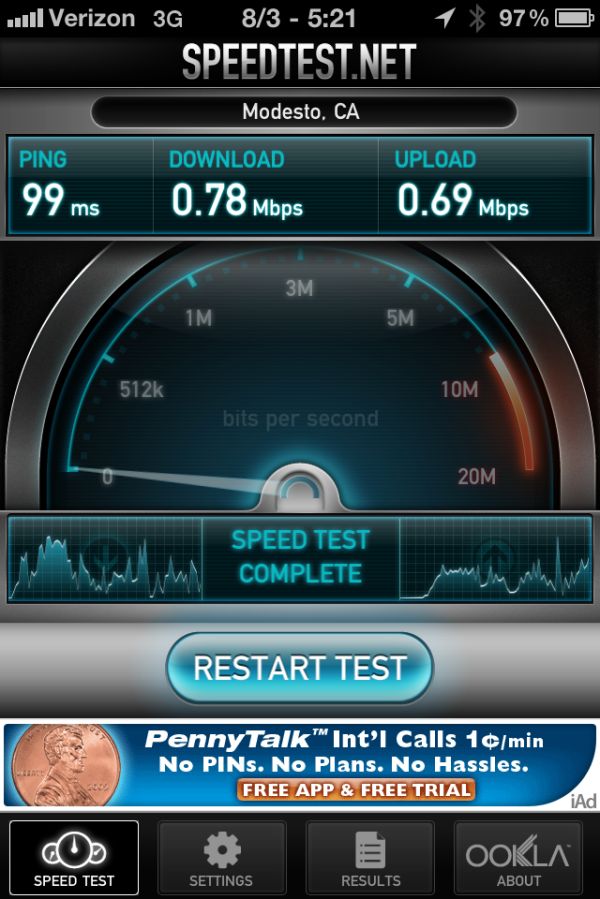
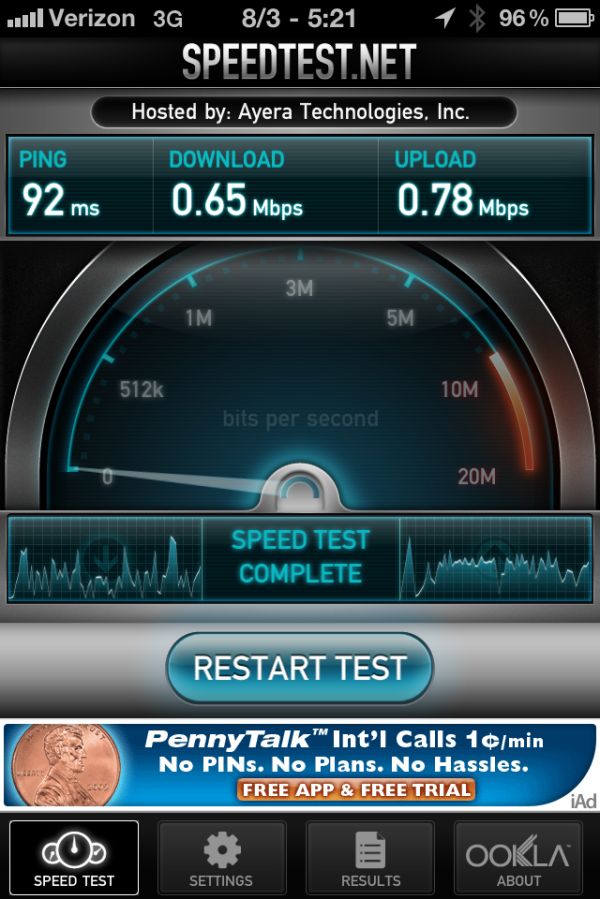
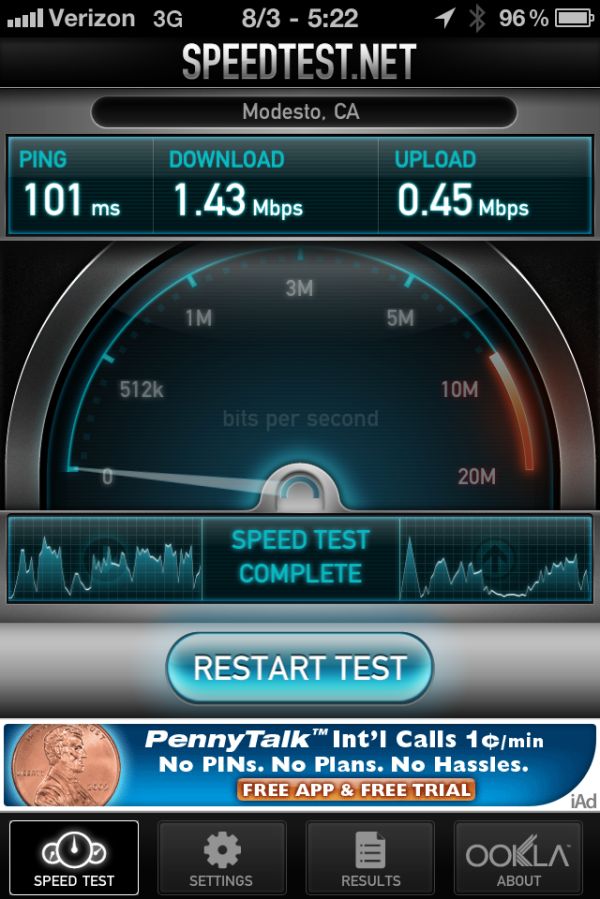








34 Comments
View All Comments
The0ne - Tuesday, August 9, 2011 - link
One of my duty as an Engineer is to write for others be it technical people or non technical; I write a lot to be honest. But I do spend quite a bit of time choosing and modifying any graphics (charts included) to ensure they are essential in any document. Randomly using graphics is generally not a very good idea. The only reason I know of is to cater to people who love to have tons of graphic and who love to stare at them all day long. Thankfully, I don't care much about these type of people until they pay me or the company to do so, I guess :) hahahaI'll take an Anandtech review over any Dailytech "news" article. Now, those are just poorly written, especially by Jason Mick who seem to think the audience is a bunch of kids and resort to the numbering type news reporting.
Anand Lal Shimpi - Monday, August 8, 2011 - link
Let's try this again :)Take care,
Anand
vshah - Tuesday, August 9, 2011 - link
Are you confusing the two? you mention it has 512mb of RAM, and that when that drops, the phone complains about free space being low. I think you meant ROM, as android will almost never complain about RAM, it will just kill stuff in the background to free up more.vshah - Tuesday, August 9, 2011 - link
also, the large game installs would go to the 1 gig of flash storage, not the 512mb of RAMbdipert - Tuesday, August 9, 2011 - link
Great point, vshah, I did indeed intermingle RAM and ROM (aka local flash memory storage) observations. I'll go update the writeup now. Thank you!snajk - Tuesday, August 9, 2011 - link
I'll probably get one of these, not for the branded games but for using emulators. My current android works ok at this, but the controls are a pain to use even though I have a phone with a "D-pad". Why settle for a few old ps1 titles when you have all the old nes/snes/genesis/neogeo/mame games to choose from?eallan - Tuesday, August 9, 2011 - link
My main device is a GS2, but i also have one of these.They are absolutely perfect for emulation.
So many super nintendo games, genesis games, even PSX games and N64. I'm pretty sure thats the best use of this phone.
The dpad and buttons are truly excellent.
BaCh - Tuesday, August 9, 2011 - link
Dear Mr. Anand, you should have spared a few words for its exceptional audio quality, as testified by both Gsmarena and Phonearena.PC_Jones - Tuesday, August 9, 2011 - link
The main reason for me getting a Play was so I wouldn't have to tote around a Wiimote if I ever wanted to play any SNES games on my phone with any accuracy. I'm surprised that the use of emulators wasn't discussed more in this article.The0ne - Tuesday, August 9, 2011 - link
I'm a retrogamer by heart. The problem with emulation is that most people don't own the games/roms they are using. I'm sorry, this is just the sad case. Retrogamers like myself, and even more hardcore, have games that we do own and setups to be able to play them with nostalgia.And while I would love to see a discussion about emulation on any platform it quickly becomes more of a "pirated" scene than anything. I collect classic games, it's sad for me to see people pirating them because they can.